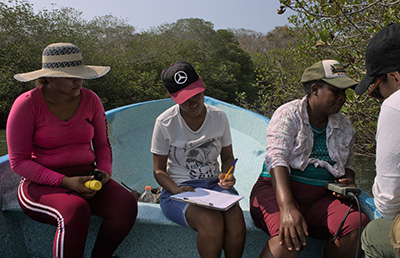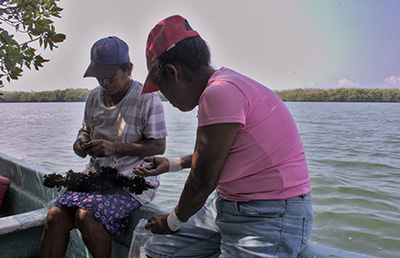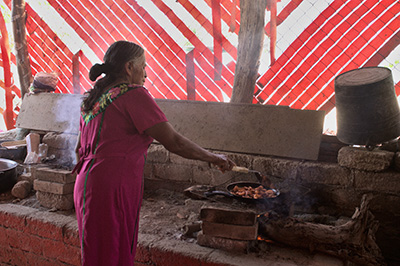Fieldwork
In the Pacific Costa Chica of Oaxaca, Mexico, two lagoons face ecological risk due to closed sandbars that inhibit the inflow of seawater, resulting in diminished oxygen levels that affect the amount and health of the native species. These lagoons, crucial to the people who live in their surroundings, have taken a place both as sick members and as political actors of the communities, and are at the same time reproached for their declining performance, held responsible for negative turns in the economic and moral life of the community, and also patiently taken care of.
Fisherwomen have organised to work together and monitor the lagoons and the native shellfish. Since the lagoons 'produce' resources, the care performed towards them has the form of reproductive labour and extends the caring women do for their husbands, their children, and their extended households.
This research aims to understand the several dimensions of care and labour performed by fisherwomen to engage with the lagoons, and the tensions and conflicts this entails amid both a highly gendered fishing economy and a State-deployed scheme of conservation that depicts lagoons not as active participants of the social, political, and economic life of the communities, but rather as dormant natural landscapes that need to be rid of human activity.
Webs of care: gender, labour, and conservation amid afflicted mangroves in Mexico's southern Pacific coast
Casandra, Mónica and Iraís measure water's depth, salinity, oxygen, and pH levels, and record them to compare them with previous and following months' measurements. Since the sandbar closed, the lagoon has been turning green, and in times of extreme heat dead fish rise to the surface. Monitoring the lagoon allows them to know where the water is fresh and where it is okay to fish.
Women from the 'Afropescadoras' working group take samples of tichinda, the native scallop that grows attached to the mangroves' roots. Tichindas are collected from different sites accross the lagoon where inflows of fresh and salt water vary, changing oxygen and pH levels; they are measured and compared to see the effects of these levels in their appearance and health. Tichindas are also a valued product, and women sell them either prepared in tamales or by the kilogram in a big market about an hour away from their home.
Cirila, a member of the fisherwomen's cooperative 'Women of the mangrove', cooks shrimps in the cooperative's restaurant. Looking after the restaurant means that these women have to find somebody to replace them in their houses' daily chores, usually their daughters or daughers-in-law.



